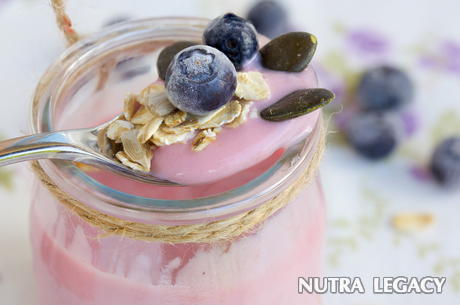Probiotics and Prebiotics: Your Online Guide to Gastrointestinal Health
- Health benefits of probiotics
- Benefits of probiotics and antibiotics
- Prebiotic and probiotic product sources
Almost everyone has that unusual feeling in your stomach and intestinal area that all is not quite right. Symptoms like bloating, diarrhea, constipation, nausea, ulcers, and other gastrointestinal woes, as well as yeast infections. These disorders can be caused by a number of life situations from taking antibiotic medication (kills all bacteria) to stress and anxiety. What you may not be aware of is that we have a plethora of bacteria and microorganisms in our bodies. Probiotics are the good bacteria that keep everything in balance. Prebiotics are the soluble fibers that keep the probiotics alive and multiplying. Both are needed to have a healthy digestive system. How do probiotics and prebiotics affect our daily lives and gastrointestinal health?

The health benefits of probiotics can help combat illnesses in several ways: They make the intestines less habitable for harmful bacteria by changing the chemistry of the gut; they produce antimicrobial compounds that destroy pathogenic microbes; and they beat the bad bacteria by competing with them for nutrients. According to Mary Ellen Sanders, executive director of the International Scientific Association for Probiotics and Prebiotics, “they also appear to enhance our own immune function. They do this, in part, by stimulating the production of infection-fighting white blood cells.” Probiotics and antibiotics are enemies. Antibiotics remove all bacteria, good and bad.
Probiotics need nourishment. Prebiotics are indigestible ingredients you eat that stimulate the growth of beneficial bacteria by serving as food for them. This is their best benefit to gastrointestinal health. The most common prebiotics are inulin and fructo-oligosaccharides (FOS), types of soluble fiber similar to oat bran, psyllium, and pectin in apples. Prebiotics differ from these soluble fibers, however, in that they specifically encourage the growth of probiotics, especially bifidobacteria and lactobacilli, in the gut. Inulin and FOS also confer some of the same health benefits associated with other types of soluble fiber, such as providing bulk to move waste through the intestines and helping to sweep out potential carcinogens.
Prebiotics encourage the growth of beneficial bacteria and work closely with probiotics to reduce risks of several diseases:
1} Intestinal health
Prebiotics increase fecal bulk, shorten transit time in the intestines, and relieve constipation. They also help treat Crohn’s disease and other inflammatory bowel diseases by reducing inflammation and encouraging the growth of lactobacilli and bifidobacteria.
2} Lower cholesterol
Research suggests that prebiotics enhance the cholesterol-lowering actions of probiotics, and help reduce cholesterol and blood lipids in their own right.
3} Colorectal cancer
Prebiotics may help reduce harmful microbes that can cause inflammation or are producing carcinogens. Also, by binding up carcinogens in the gastrointestinal tract and stimulating peristalsis and elimination, prebiotics may further help prevent and treat colorectal cancer.
4} Immune system
According to Glenn Gibson, Ph.D., professor of food microbiology and head of the Food Biosciences Department at the University of Reading, England, some preliminary studies suggest that prebiotics can improve resistance against infection. They accomplish this by providing food for probiotics, which make the immune system function more efficiently by “training” it to mount a speedy response to pathogens, clear them from the body, and then “calm down” again. Probiotics and prebiotics involve a nice balance of both when it comes to gastrointestinal health.
5} Bone Health
Another health benefit of probiotics is bone health. Inulin in particular appears to enhance the uptake of calcium, probably both by increasing water in the bowel and boosting the volume of fluid in which calcium can dissolve and by acidifying the colon and, thus, raising the concentration of calcium.
So what are the sources of prebiotics and probiotics?
1} You can get prebiotics naturally:
The fiber in oats, oat bran, barley, rice bran, apples, berries, and legumes acts as food for probiotic bacteria. However, microbes vary and so does their diet. Probiotics tend to like soluble fiber, while harmful bacteria don’t.
2} Dietary phenols support friendly flora by inhibiting the growth of harmful bacteria. They’re found in legumes, tea, red wine, fruits, berries, and dark chocolate.
3} Polyunsaturated fatty acids
Some animal studies suggest that polyunsaturated fatty acids may function as prebiotics to a small degree, by inhibiting the growth of pathogens. Examples of food sources include nuts, seeds, several vegetable oils (such as soy, safflower, corn, and sunflower), and fatty fish, like salmon, tuna, and herring.
4} Naturally fermented
The best sources of probiotics are naturally fermented items such as yogurt, pickles, sauerkraut, sour cream and whey.
4} Supplements as a probiotic product
Studies have yet to show any significant benefit from supplement probiotics. The medical community admits that continued studies and research need to be pursued.
The information supplied in this article is not to be considered or used as medical advice and is for educational purposes only. You should always consult with your primary medical provider.
The information supplied in this article is not to be considered as medical advice and is for educational purposes only.
|
One Response to “Probiotics and Prebiotics: Your Online Guide to Gastrointestinal Health” | ||||||||||||||





 16 Oct 2009
16 Oct 2009
This is totally new information! I’ve always heard of probiotics, but I’ve never heard of prebiotics. So, you need a delicate balance of these two, right? How can I make sure I maintain it – what should I avoid eating?January 18th, 2011 at 8:44 am